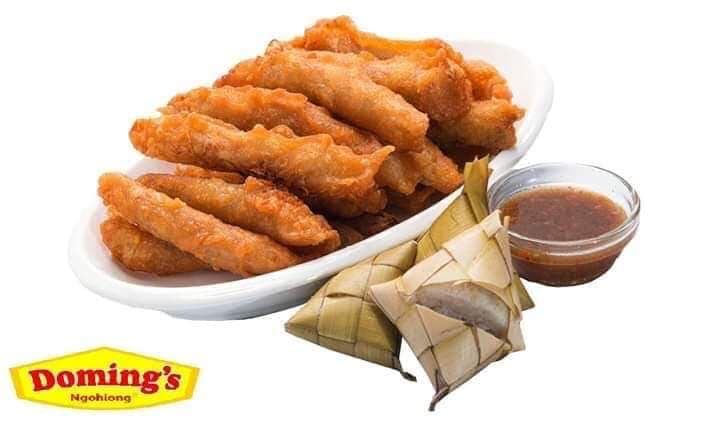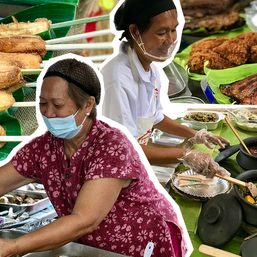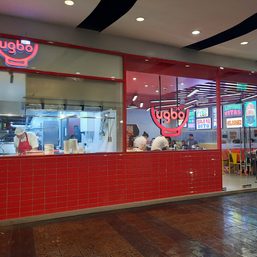SUMMARY
This is AI generated summarization, which may have errors. For context, always refer to the full article.

Cebu’s culinary identity is rich in influences from all over the world.
In the past, Cebu had encounters with sea-faring travelers who would share their ingredients and cooking knowledge. According to multiple history books, Cebu had ports where Chinese spice traders would transact with natives. They’d later settle down in Cebu permanently.
Centuries later, Cebuanos found and developed their very own original recipe for one of China’s “most gifted family prizes.”
Louelle E. Alix, a heritage worker and food historian, said that before the 60s, ngohiong was as a gift exchanged between Chinese families during special occasions.
Ngohiong, during this time, resembled sausages and had meat, particularly pig intestine, in them. In fact, it was pretty much like the Hokkien dish “ngo hiang” (also known as kikiam in the Philippines).
It was only a decade after, in the early 70s, that Chinese families, especially the chefs of the households, would start using a meat substitute that had turned the Chinese heirloom recipe into the Cebuano original it is today.
While the meat has changed, the 5 spices used to create ngohiong – cinnamon, star anise, fennel seeds, Sichuan pepper, and cloves – have not.
“Ngohiong or Ngo Hiong when translated actually means five spaces. That’s the main ingredient there,” said Alix.
“Ben Chua, a member of the Archdiocesan Commission for the Cultural Heritage of the Church, like us, noticed that in his school before in Cebu Eastern College, somebody started ngohiong but he says only the rich students could afford it,” Alix explained.
“This Doming Yap in Guadalupe started selling in school and started making it more affordable and so the addition of ubod started,” she added.
(Editor’s Note: An earlier version of the story named the original seller as Doming Chua. We regret the error.)
This substitute known as “ubod” or “coconut palm heart” (some use bamboo shoots), was used in order to make ngohiong more affordable. The ingredient is abundant in Cebu.
Later, Cebuano-Chinese families began using lumpia wrappers because they were easily accessible in Carbon.
As time went by, less meat was used in the making of ngohiong until eventually, meat made its way out and only ubod remained. Ngohiong was now sold everywhere because of how affordable it had become.
“Now, there is even hardly ubod because it is commercially-made,” Alix joked.
It wasn’t long until ngohiong had been sold with spicy sauces that made it even more “halang,” (spicy) as Cebuanos say.
University of San Carlos Museum Director Dr. Jobers Reynes Bersales noted that Cebuanos generally aren’t too fond of heat in their food but for some reason, ngohiong made it past the typically hot-averse Cebuano palate.
Alix said ngohiong’s appeal is how crispy it stays.
“The secret for the crispiness of the ngohiong, why it can keep crispy for a long time is that it’s cooked in pork lard – not any ordinary oil and I think that’s what we look for in the taste and the smell,” she said.
Chinese families usually have their own versions of Chinese dishes, like lumpia. Little tweaks are made so specific flavors would remind guests of the family’s prominence and, perhaps, cooking expertise.
The same is true once ngohiong became popular fare. Businesses like Doming’s Ngohiong, one of Cebu’s oldest ngohiong houses, have their own ngohiong “taste,” for instance.
That ngohiong is unique to Cebu is clear. Alix explained that it evolved from the recipes of Chinese families in Cebu, particularly from the Uy clan.
Bersales, meanwhile, pointed out since it’s only popular in the city (and not in other major megacities like Metro Manila), it only means that whoever introduced it was based only in Cebu, and had no connections to Manila.
“The recipe was developed in Cebu. It was made by the women from those families,” Alix said.
“The cooking became enculturated and we didn’t have to rely on Chinese recipes anymore,” she added.
Alix said that while we have multiple influences in cooking Filipino dishes, it’s Chinese cuisine that’s stayed with us the longest. Much like pancit, Cebu’s ngohiong has garnered a loyalty that cuts across generations.
If you’re interested to check out Cebu’s ngohiong houses, check this list below:
Doming’s Ngohiong
(Located along Fairlane Village Road, Barangay Guadalupe, Cebu City)
While there are numerous places to get best ngohiong, the one place that stands out the most to Cebuanos is Doming’s Ngohiong.
Since the pandemic, they’ve opted for takeout orders only and are open from Mondays to Saturdays (8:00 am to 3:00 pm).
Call them for orders via 09225403565/ (032) 255 7399.
Edd’s Ngohiongan sa Talamban
(Located near the University of San Carlos – Talamban Campus, Cebu City)
Edd’s Ngohiongan is among the many iconic food spots in Cebu and is quite popular among students of the University of San Carlos.
They can be contacted through 09430606397, with orders via delivery, takeout, or pickup.
Chinese Ngohiong
(Located along Junquera Street, Cebu City)
Best known as “Chinese Ngohiong sa San Carlos,” this carenderia has been operating since 1990. Their versions comes wrapped in a well-seasoned rice paper and comes with a “special sauce” that Cebu’s ngohiong connoisseurs cannot get enough of.
While work hours may differ, they are usually open from 8 am until 5 pm. You can contact them for deliveries via (032) 255 4568
Ngohiong Express
(Located along A.S. Fortuna Street, Manadaue City)
Ngohiong Express is an original homegrown fast food business that offers half-cooked ngohiong and frozen siomai for “pasalubong” or for your home supply.
They sells packs of 30 ngohiong pieces for only P150. Delivery hours are open from Mondays to Saturdays. The daily cut-off is at 3pm.
You can contact them here via their official Facebook page or through (032) 511 1159.
– Rappler.com
Add a comment
How does this make you feel?

![[WATCH] Binignit for Holy Week](https://www.rappler.com/tachyon/2021/03/binignit.jpg?resize=257%2C257&crop_strategy=attention)



There are no comments yet. Add your comment to start the conversation.